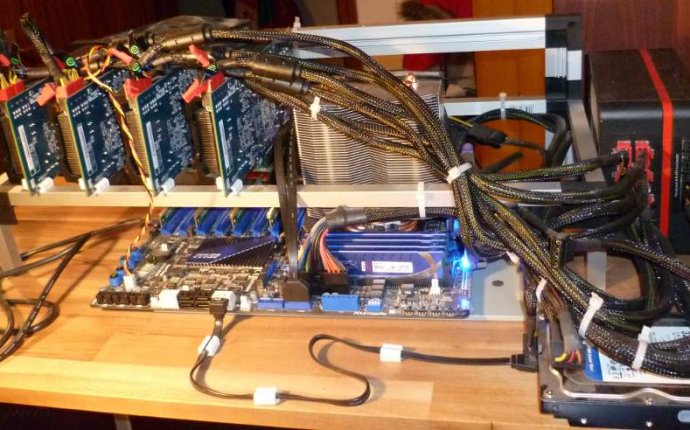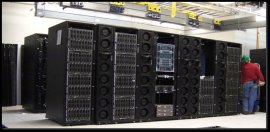
Bitcoin mining cluster
 Supercomputers are pretty amazing. They’re mostly used for research since they specialise in processing, analysing, and doing computations on ridiculous amounts of data at high speeds. Supercomputer simulations have been used to understand earthquakes, model pandemics, predict the weather, and more. Harvard University has its own supercomputing cluster called Odyssey, which boasts a 14, 000 core Intel Xeon architecture with over 10 TB of RAM. But unlike most researchers, one student at Harvard decided to use the school’s massive computing power…to mine Dogecoin.
Supercomputers are pretty amazing. They’re mostly used for research since they specialise in processing, analysing, and doing computations on ridiculous amounts of data at high speeds. Supercomputer simulations have been used to understand earthquakes, model pandemics, predict the weather, and more. Harvard University has its own supercomputing cluster called Odyssey, which boasts a 14, 000 core Intel Xeon architecture with over 10 TB of RAM. But unlike most researchers, one student at Harvard decided to use the school’s massive computing power…to mine Dogecoin.
Unfortunately for the student (who remains unknown at the moment), mining uses a lot of processor power, and this type of nonstop activity was soon noticed by system administrators. Harvard’s assistant dean for research computing, James Cuff, sent out an email (included at the bottom of this post) acknowledging the misuse and warning others of the consequences of abusing University resources. In short, the student has been permanently banned from using all research computing facilities at Harvard.
Of course, you might be wondering exactly how profitable this was. As it turns out, the Odyssey can only mine at a maximum of ~20MH/s, since any mining operations would be using the CPUs. This is still a lot, but it’s not at all insanely fast. In fact, just 13 AMD 7990 GPUs can get similar results. Harvard’s college newspaper, “The Harvard Crimson, ” reported that if mining had continued for days, the student could have generated “hundreds, and perhaps thousands” of dollars in DOGE. It’s unknown exactly how many Dogecoins the student mined, and whether or not he/she kept his/her earnings.
Such bad shibe.
(Email from James Cuff, Harvard’s assistant dean for research computing)
Subject: [Hptc-users-list] Policy statement on crypto currency mining and personal for profit campaigns.From: FAS Research Computing Users Group [email protected]
Reply-To: [email protected]
To: [email protected] [email protected]
Dear all,
I really hate having to send notes like this to our community –
especially one as smart, gifted and talented as you all are, but
anyway here goes…
Yesterday we were alerted to an unfortunate situation by one of our
community members using the Odyssey cluster who spotted an anomaly
with a set of compute nodes.
Long story short, a “dogecoin” (bitcoin derivative) mining operation
had been set up on the Odyssey cluster consuming significant resources
in order to participate in a mining contest.
I do want to also quickly state that Research Computing does not
inspect, examine or look at algorithms and codes that are executing on
the cluster, we respect your science and assume we are all good
citizens. However, in the course of business, or as happened
yesterday, if we are alerted to unexpected behavior we always
investigate the cause of any issue.
So, to put this simply:
Odyssey and Research Computing resources can not be used for any
personal or private gain or any non research related activity.
Accordingly, any participation in “Klondike” style digital mining
operations or contests for profit requiring Harvard owned assets to
examine digital currency key strength and length are strictly
prohibited for fairly obvious reasons. In fact, any activities using
our shared resources for any non scientific purpose that results or
does not actually result in personal gain are also clearly and
explicitly denied.
As a result, and as guidance and as warning to you all, I do need to
say that the individual involved in this particular operation no
longer has access to any and all research computing facilities on a
fully permanent basis.
Don’t let this happen to you.
Best,
j.
—
dr. james cuff, assistant dean for research computing, harvard
university | division of science | thirty eight oxford street,









